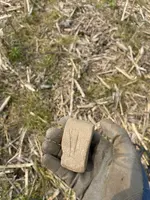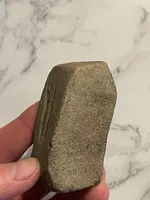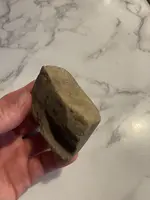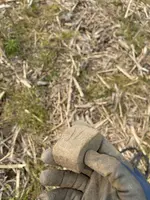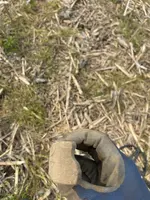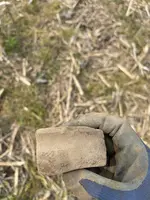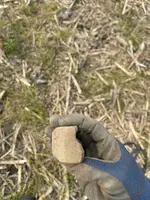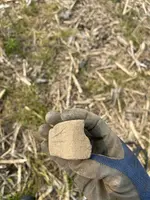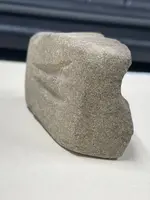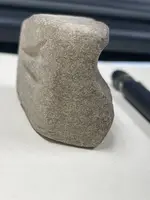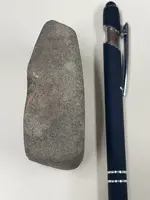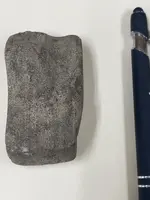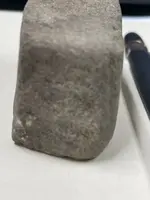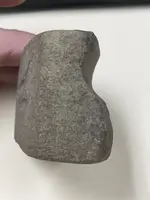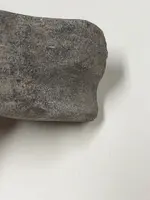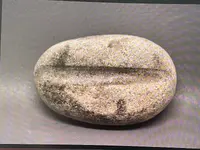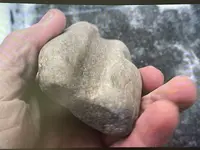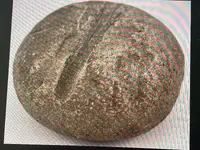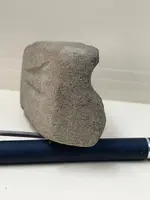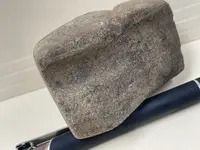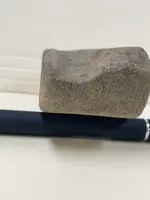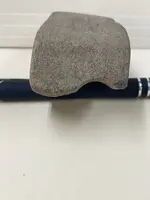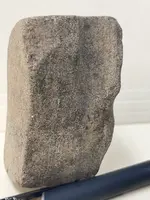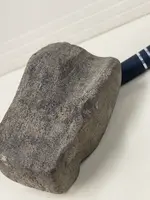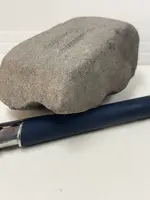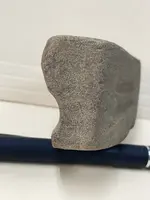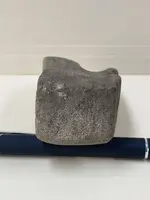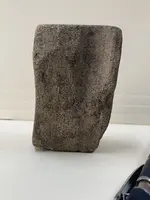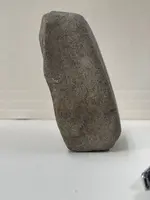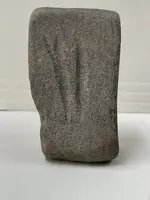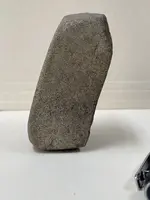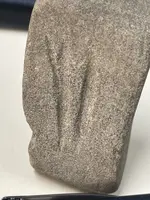Abrader. One side was for shafts, the other side was used to abrade a piece of flint that was being knapped. When pressure flaking arrowheads, the edge has to be dulled before removing flakes. Those narrow deep scratches were made by flint. I’ve been knapping since 1985.
I had this piece looked at before I even posted it. I have an experienced and reputable friend that is affiliated with the University of Iowa Archeology department. He has recovered more Native artifacts and recorded more Native sites for the University than anyone around this area. He immediately confirmed it to be an arrow shaft sander or as it is officially called, an Abrader.
I have been involved in metal detecting and artifact hunting for several years now, the latter of which I am a little greener on, and I always find it interesting when you post something and people view it or label it as something it’s not. Not only do they debate it incorrectly but they fail to provide any justification for their opinion. Most people won’t back their opinions on an item with facts or information rather they push what their view is and then shrink back into the shadows and allow others just go with what they say. It simply serves to show that just because you have a title with your name it doesn’t mean you know a lot about the subject or demonstrate good leadership.
I have found that when you post something you are going to get multiple opinions on the item even when it is pretty obvious what it is. I like to push the issue or even debate these things because I know I have taken the time to research and confirm facts. I’ve found that presenting your educated side and not just taking what people say is a good way for everyone to learn, even if I do come off abrasive. It garners much more attention when you stand behind your research and debate it instead of just taking what some “gatekeeper” on a forum says as gospel.
Hopefully this item and the debate surrounding it will help another treasure hunter in the future identify an item they come across. Preserving history is the goal of what we all do at the end of the day and preserving the correct history is very important.
ToddsPoint thank you for your actual assessment of the piece. I’m glad you were able to reaffirm what the piece was based off of your actual hands on experience with the items and the techniques used to produce or utilize them. It shows you actually have knowledge in this area and aren’t just throwing out opinions. Hopefully others, if not all ready, look to you for advice on their items as well.
This artifact will be documented and recorded and hopefully will be remembered for another 1000 years so that future generations can learn about and remember our pasts.
Happy hunting!

